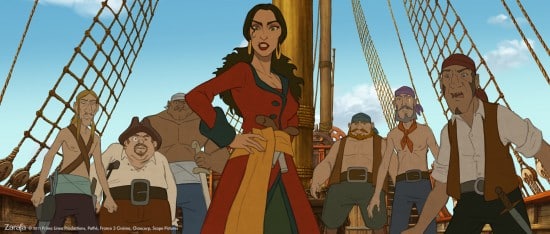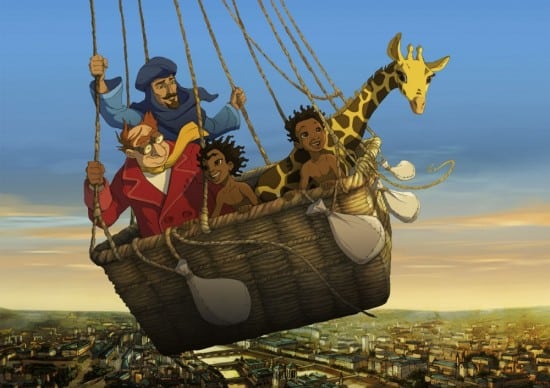*contains spoilers*
 Rémi Bezançon was born in Paris in 1971 where he studied film at the École Supérieure de Réalisation Audiovisuelle and the École de Louvre. After his feature Ma Vie en L’Air, he found success with The First Day of The Rest of Your Life in 2008 which won him Best Director, Best Writer and Best Film at the Césars in 2009. He followed this with Un Heureux Événement, a frank an intimate exposure of motherhood, which starred Pio Marmaï (Delicacy) and Louise Bourgoin.
Rémi Bezançon was born in Paris in 1971 where he studied film at the École Supérieure de Réalisation Audiovisuelle and the École de Louvre. After his feature Ma Vie en L’Air, he found success with The First Day of The Rest of Your Life in 2008 which won him Best Director, Best Writer and Best Film at the Césars in 2009. He followed this with Un Heureux Événement, a frank an intimate exposure of motherhood, which starred Pio Marmaï (Delicacy) and Louise Bourgoin.
We met him and his co-writer, Alexander Abela, for the UK Premiere of his film ZARAFA, a finely wrought and delightfully intelligent animation based on the true story of a Giraffe gifted to French royalty…
AR: First of all, congratulations on Zarafa.. a magical film. It felt like you chose a musical feel of Lawrence of Arabia..?
RB Yes.. and we drew on Omar Sharif for Hasan too, not just the music and Maurice Bejart for the choreography. We wanted a lyrical style of music, an epic, old-fashioned style of adventure music.
AR And the style of the animation…
RB Jean-Christophe Lie has a style more like Chomet (Belleville Rendezvous) a very good style, but I wanted something more like Miyazaki for this film, like Spirited Away, Totoro -Studio Ghibli. I wanted to go more towards that style where you might get a shot of someone’s hair moving.. more descriptive.

AR It reminded me also of TinTin.
RB Yes, TinTin- in France we sit between Disney and the Japanese… the style is called ‘clear line’, like TinTin all French animation, historically, is based on the clear line, from Hergé onwards.
AR: I was interested whether you were wanting- as a director- to work in different genres, or whether the story dictated the genre.
RB The story always dictates the genre… always. My adult films are ‘poetic-realist’. For this one, I wanted to make it in a way that children would like and also a way that I would have liked to see as a child myself.
AR From what I pick up from your other films, like Women For Sale (Vendue), which concerns the European Mafia trafficking women and prostitution and here again with slavery… do you believe that your films are political?
RB Firstly, I only co-wrote that film and I didn’t direct it.

AR Understood but, even so…
RB My films aren’t very political and in a way the most political film I have made is Zarafa, because it’s a film that I believe has many resonances with how we live today; colonisation, integration, liberty and relationships between foreigners within society. We are living in countries that are closed, so it’s a film that talks about freedom in a political way.
AT In effect then, that is quite a political statement.. no?
RB Yes.. Strangely, it is more political than any of my live action films. It seems I have to make a children’s film to be able to make a film that has actually a bit more of a political bent.
AT You say you like Kurosawa, Ozu, Spielberg, Scorsese…
RB Yes, how did you know? I love these directors, Spielberg, Ozu, Kurosawa, Scorsese…
AR Do you feel they are influencing your work?
RB Yes, Seven Samurai influenced me with Zarafa, but my films are French, not in the mold of those I like, but I am inspired by them more in the way they tell a story.. but it’s important it’s not just copied, it has to be digested. But my live action films are much more inspired by the Italian films of the Seventies.
AR With this film you chose a very classic three-act structure…
RB Very classic. When you make an animated film, you have to stick to the classic. And it works for children- it works for everyone!
AR Your grandfather made home movies… on a Bolex?
RB Yes, on Bolex..
AR Do you feel this had an influence on you becoming a filmmaker?
RB Yes of course, I found it fascinating to use a little Super 8 camera to make small films of my own when I was very young and then using the first video cameras, when they came out. So I used to line up my model soldiers and film them when I was very little. But I told real stories.
AR Do you still have these films?
RB No, no (unfortunately), nothing.
AR Your next film is Nos Futurs (now out in France) Can you tell me anything of this?
RB It’s a Punk movie.
AR: A punk movie..?
RB A comedy about midlife crisis, starting filming at the end of this year.
AR: Ok. Oh, tell me, who came up with the idea for the solar eclipse (in Zarafa)? I liked that very much.
RB Me. I love the transitions..
AR: This is where you find great creative input…
RB Yes I love these things. Thank you.
ZARAFA IS ON GENERAL RELEASE ON 8 OCTOBER 2015





